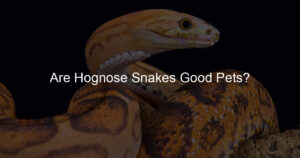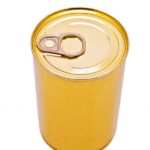A Comprehensive Guide: Is a Hognose Snake Right for Your Home?

Introduction
Hognose snakes have grown in popularity among reptile enthusiasts due to their distinctive appearance, manageable size, and fascinating behaviors. For those considering a hognose snake as a pet, understanding their care requirements, temperament, and long-term needs is crucial. This guide explores everything you need to know about keeping a hognose snake and offers actionable steps to help you determine if this species is the right fit for your household.
1. What Makes Hognose Snakes Unique?
Western hognose snakes (
Heterodon nasicus
) are small, fossorial reptiles native to the grasslands of North America. Their upturned snout, triangular head, and blotched tan-and-brown pattern make them visually striking. Hognoses are diurnal, meaning they are active during the day, and they spend significant time burrowing in sandy, well-drained soil.
These snakes usually reach lengths between 17 and 35 inches, with females growing significantly larger than males. Their mild venom is not dangerous to humans but does necessitate careful handling and awareness, especially for households with young children or immunocompromised individuals.
[2]
2. Temperament and Handling
Hognose snakes are generally docile and rarely bite out of defense. Their charming personalities make them appealing to both beginner and experienced reptile keepers. They are known for their dramatic defensive displays, such as flattening their necks or playing dead, but these behaviors are harmless and part of their natural instincts. When handling your hognose snake, always support its body fully and avoid sudden movements. Regular, gentle handling can help your snake become more comfortable with human interaction. However, always supervise interactions with children and teach proper handling techniques. [5]
3. Habitat Setup and Environmental Needs
Creating the ideal enclosure is essential for your hognose snake’s health and wellbeing. A suitable habitat should mimic their natural environment and facilitate burrowing behaviors. For adult hognose snakes, a 36″ x 18″ x 18″ enclosure is recommended. Wooden vivariums are ideal for maintaining steady heat and security. Equip the enclosure with: – A basking lamp and thermostat to ensure proper temperature gradients – Deep substrate (at least 4 inches, preferably more) made from a mix of 80% organic, additive-free topsoil and 20% play sand, or commercial reptile bedding like Zoo Med Reptisoil. Leaf litter on top provides enrichment and helps maintain humidity. – Hiding spots, branches, rocks, and resin decorations for exercise and stimulation – A shallow water bowl with fresh water changed daily Spot clean the enclosure daily and perform a full substrate change every 3-4 months to prevent buildup of waste and bacteria. [3] [4]
4. Feeding and Nutrition
Hognose snakes are typically fed defrosted mice or rats appropriate to their size. As hatchlings, they grow slowly and take 2-3 years to reach adulthood, so smaller prey items are ideal during this period. Some hognoses may occasionally refuse non-amphibian prey, but most adapt well to a rodent diet. Feed your snake every 5-7 days, adjusting frequency based on age and activity level. Always provide fresh drinking water and monitor your snake’s feeding responses to ensure health. [3]
5. Routine Maintenance and Health
Consistent routines help keep your hognose snake healthy and secure. Spot clean the enclosure every couple of days, and perform a deep clean (including substrate replacement and tank disinfection) every month or so. Regularly check your snake for signs of shedding issues or respiratory infections. Signs of health problems include incomplete sheds, wheezing, bubbles from nostrils, or lethargy. If health concerns arise, consult a reptile veterinarian promptly. Routine observation and consistent care are vital to catching issues early and ensuring your snake thrives. [1]

Source: truespiritanimal.com
6. Enrichment and Behavioral Wellbeing
Environmental enrichment is key to promoting natural behaviors and overall wellbeing. Use a variety of decorations-branches, rocks, leaf litter, and hides-to encourage exercise and mental stimulation. Hognose snakes are surprisingly active, especially at night, and will make use of climbing and hiding areas. Switching up the layout periodically and adding new enrichment items can keep your snake engaged and reduce stress. [5]
7. Step-by-Step Guide to Getting Started
To welcome a hognose snake into your home, follow these steps:
- Research Reputable Breeders: Begin by searching for established reptile breeders or specialty pet stores in your region. Look for breeders with positive reviews and ethical animal care practices. Ask about the snake’s feeding history and health records before purchase.
- Prepare the Enclosure: Set up the vivarium with appropriate substrate, heating, lighting, and enrichment items. Test temperature and humidity levels before introducing your snake.
- Acquisition and Quarantine: Upon acquiring your hognose snake, quarantine it for 30 days in a separate enclosure to monitor for any signs of illness.
- Establish a Feeding Routine: Feed on a regular schedule and keep detailed records of feeding and health observations.
- Locate Veterinary Support: Identify a local veterinarian specializing in reptiles for routine checkups and emergencies. Many cities have reptile-focused practices-search online for reviews and credentials.
If you need help finding breeders or reptile veterinarians, you can search online using terms like “reptile vet near me” or “hognose snake breeder [your city]”. Reptile forums and societies often list reputable sources.
8. Potential Challenges and Solutions
While hognose snakes are relatively easy to care for, there are some challenges to note:
- Feeding Refusal: Occasionally, hognose snakes may refuse rodent prey. Try scenting prey with amphibian odor or consult a reptile specialist for alternative feeding methods.
- Humidity Fluctuations: Improper humidity may lead to shedding issues. Use a pressure sprayer to mist the enclosure and add leaf litter to maintain proper levels. [4]
- Health Concerns: Watch for signs of respiratory infection or incomplete sheds. Adjust temperature and humidity as needed and consult veterinary care promptly.
Alternative approaches for enrichment or feeding can be found by connecting with local reptile clubs or attending herpetology expos, where experts share tips and resources.
9. Alternatives to Hognose Snakes
If a hognose snake does not seem to be the right fit, consider other beginner-friendly reptile pets such as corn snakes or leopard geckos. These species have similar care requirements and may offer different temperaments or feeding habits. Research each species thoroughly before making a decision.
Conclusion: Is a Hognose Snake a Good Pet?
Hognose snakes are wonderful pets for reptile enthusiasts who are willing to maintain consistent care routines and provide a stimulating environment. Their manageable size, distinctive personalities, and relatively simple care needs make them a top choice for both beginners and experienced keepers. By following best practices in habitat setup, feeding, enrichment, and health monitoring, you can ensure your hognose snake remains healthy and happy for many years.

Source: ar.inspiredpencil.com
References
- [1] YouTube (2025). Hognose Snake Care Guide-Video guide for setup, health, and routines.
- [2] The Bio Dude (2025). Western Hognose Care Sheet and Maintenance-Comprehensive care guide for western hognose snakes.
- [3] Internet Reptile (n.d.). Hognose Snake Care Sheet-Advice on housing, feeding, and hygiene.
- [4] Zen Habitats (n.d.). Hognose Snake Care Sheet-Habitat setup and substrate recommendations.
- [5] ReptiFiles (2020). Western Hognose Snake Care Sheet-Detailed PDF on care and maintenance.






